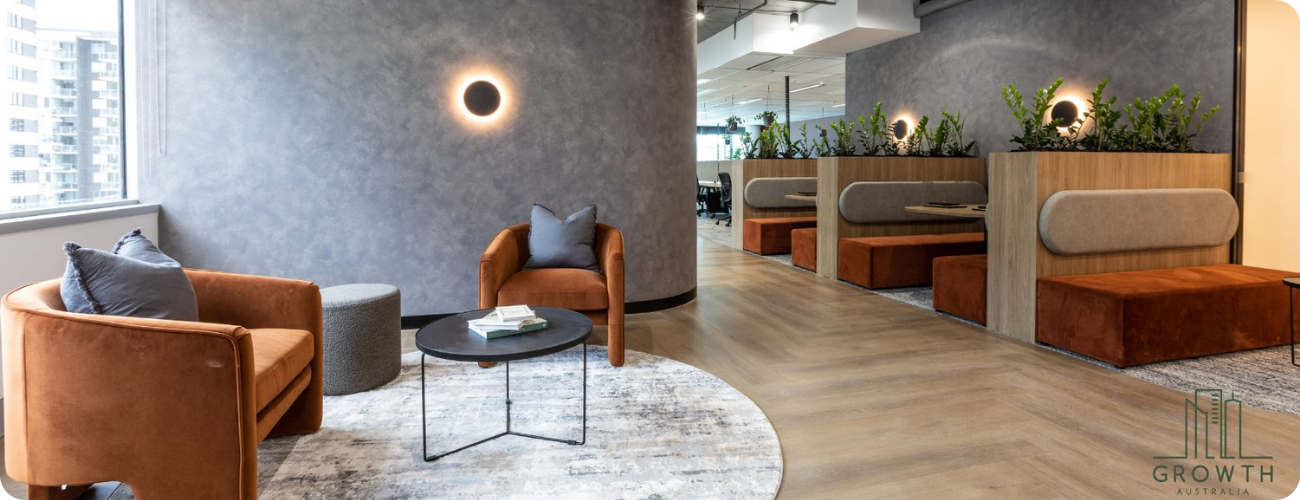As businesses look to the future, there is a growing trend towards bold and innovative commercial interior design choices. This year marks the start of a new era of design, one that is both functional and fashionable. Whether your business is large or small, incorporating the latest interior design trends will give your workplace the edge it needs to remain competitive in the ever-evolving business landscape.
In this blog, we will explore our top Commercial Interior Design trends for 2023 and how they can be implemented to help your business stand out.
1. Multifunctional spaces:
With tenants looking at downsizing and taking less space due to popular hybrid work models, flexibility is key. We are seeing a focus on incorporating flexible and multipurpose spaces which can be utilised for different activities. An example of this is a large kitchen and breakout spaces with tech solutions to enable a kitchen for mingling and eating, as well as space for both companywide town hall updates and client-facing social events. Flexibility in the workplace also means incorporating furniture and layouts that can be adapted easily to accommodate different types of tasks and work styles. Moveable furniture, such as mobile desks or folding chairs is a great option for workplaces as it allows for easy reconfiguration and can save space when needed.
2. Layout trends:
We are seeing a focus on activating the front-of-house reception, waiting and meeting spaces by incorporating in-formal meeting zones, integrated hydration and high bar seating points or smaller touch-down concierge desks, rather than large, under-utilised reception desks and stark static waiting areas. This trend also allows the receptionist to feel more included in the everyday hustle and bustle of the office. We are also seeing the staff kitchen and breakout zone move closer towards the front of the office, allowing guests to see a sneak peek into the everyday activities within their company and showcasing their culture.
3. Open-plan areas:
Across the board, we are seeing open-plan areas becoming increasingly popular and less of a focus on closed-off offices for managers and senior leaders. This encourages cross-team collaboration and communication among employees, eliminating ideologies around hierarchy and supporting transparency across companies. We are also seeing meeting rooms, offices and less utilised spaces move away from perimeter glazing and towards internal walls, allowing staff work points to be situated here instead. By locating open-plan workspaces along perimeter glazing or windows and allowing plenty of natural light to pour into these zones, staff are enabled to work within a pleasant environment conducive to productivity.







